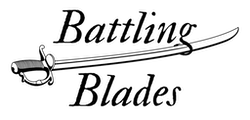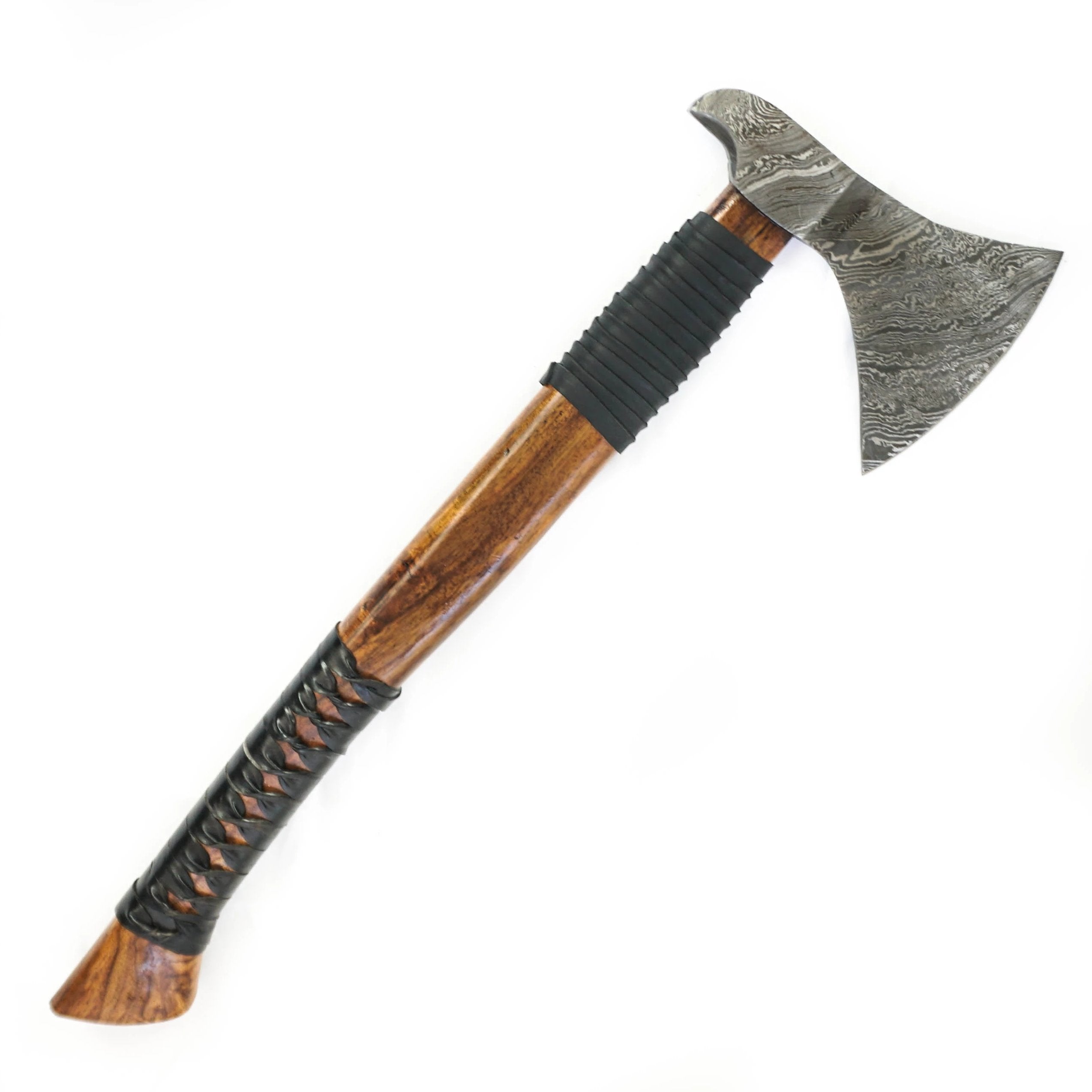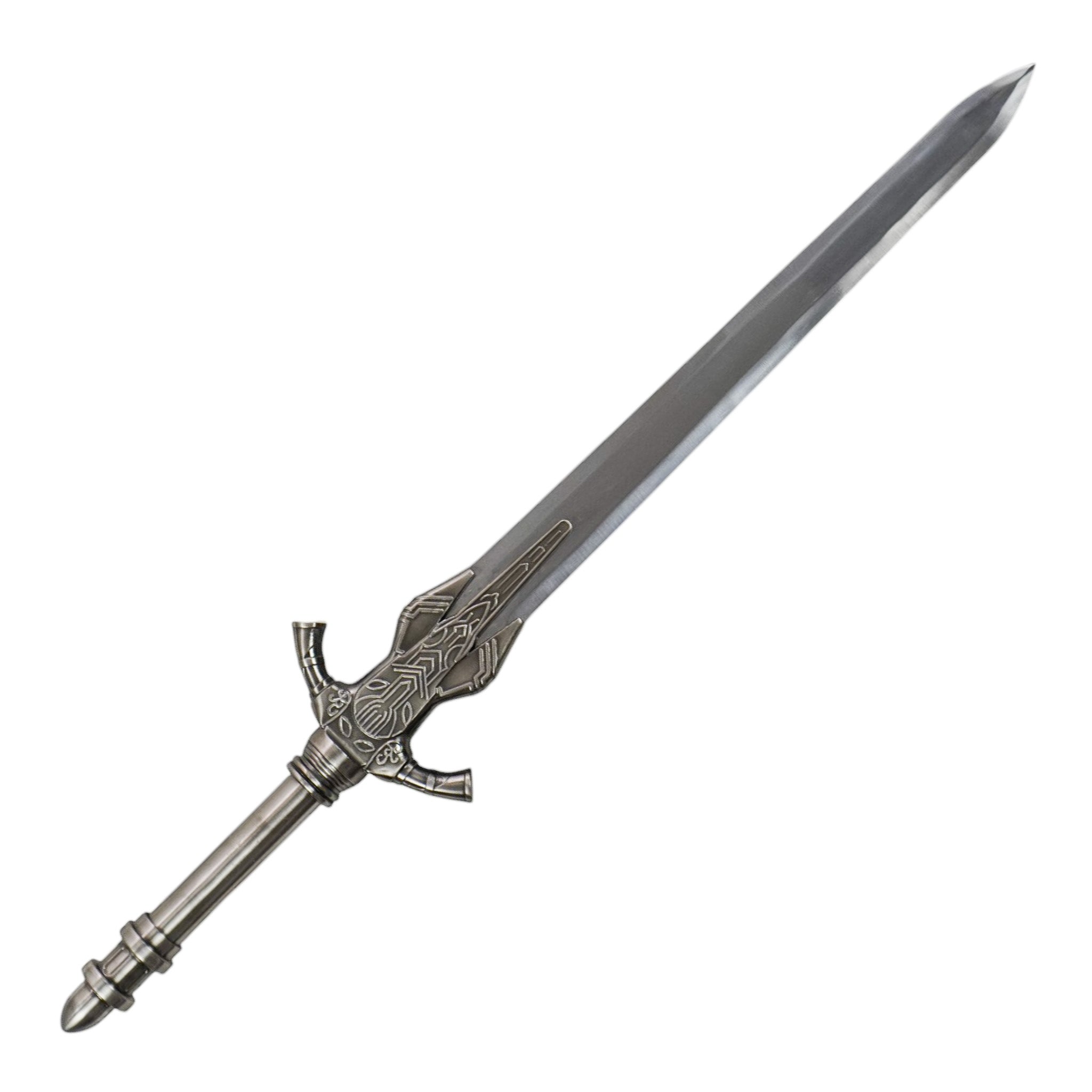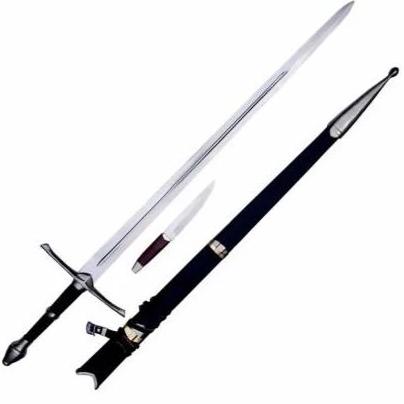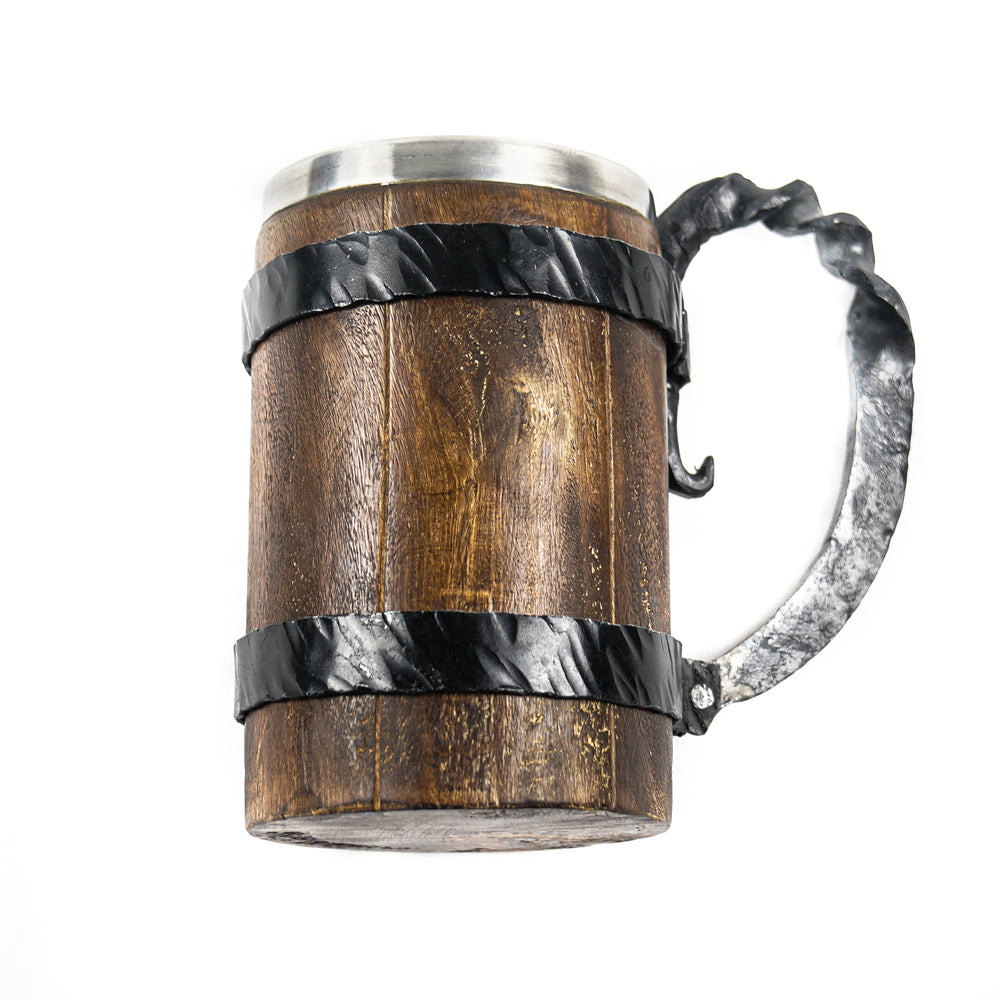Roman Bundle
1. Damascus Steel Gladius Sword
2. Damascus Steel Roman Knife
3. Roman Scutum Shield
4. Roman Helmet
5. Roman Chess Set
6. Muscle Cuirass- Roman Chestplate
7. Roman Wooden Mug
8. Sword Stand
Sword Type
Handle Material: Wood with Brass Bolsters
Overall Length: 24"
Rockwell Hardness: 55-56 HRC
Number of layers: 352
Sheath: Leather sheath
Blade Material: Damascus steel
Roman Knife
Handle: Rosewood with Damascus Steel Bolsters
Handle Length: 5"
Overall Length: 12"
Rockwell Hardness: 55-56 HRC
Number of layers: 352
Pommel: Damascus Steel
Roman Scutum Shield
The scutum shield, or Roman shield, was a type of shield used by the army of ancient Rome. The shield was used from fourth century B.C.E. to the fourth century C.E. The Romans adopted it when they switched from the military formation of the hoplite phalanx used by the Greeks, to the formation with maniples. In the former, the soldiers carried a round shield, which the called a clipeus. The scutum was a much larger shield. Originally it was an oblong and convex shield. By the first century BC it had developed into the rectangular, semi-cylindrical shield that is popularly associated with the scutum in modern times. This secondary version is the type sold here. This was not the only shield the Romans used; Roman shields were of varying types depending on the role of the soldier who carried it. Oval, circular and rectangular shields were used throughout Roman history. This sword is 35 inches tall by 18 inches wide.
Roman Helmet
The Roman soldier helmet, called a Galea, Were common during the peak of the Roman empire. Soldiers wore the helmets during battle but other Romans used them as well. Certain gladiators, specifically myrmillones, wore bronze Galea helmets often with face masks and decorations. The exact design of the helmet varied over time and between unit types. This Roman helmet is a standard Galea from the Imperial Gallic period. Originally, Roman helmets were influenced by the Etruscans, a neighboring people who utilized the "Nasua" type helmets. Greek influence is clear in early Roman helmet designs.
Roman Chess Set
Roman chess sets are hand crafted, carefully and meticulously laid in place. Each square is different, making every board unique. Likewise, the chess pieces are molded to be antique Roman soldiers. This beautiful chess board and chess pieces are of the highest quality, possess handmade symmetry, and ornate beauty.
This chess set is made of brass. The colors create a pure, authentic look, The pieces are red and gold and have a complex and elegant design. The pieces are designed to resemble Roman figures. The board is 12” wide and the king stands 3.5” tall.
Roman Chest Plate- Muscle Cuirass
The Roman Breastplate, also known as the muscle cuirass or heroic cuirass, is a type of armor designed for the torso and intended to imitate a romanticized male figure. It first appeared in Greece, becoming widespread throughout the 5th and 4th centuries B.C.E. Though originally made from hammered bronze, boiled leather became commonly used. It typically depicted in Greek and Roman symbols and was worn by generals and emperors. Archaeological finds indicate that simpler cuirass armor was worn under combat situations, but artistically decorated versions were found as well. This leather cuirass is ornately decorated, representative of original officer armor from the Roman army.
Roman Mug
Style: Horn Mug
Tankard Type: Roman Mug
Material: Wood and Iron
Capacity: 12 fl oz
Drinking Area: Resin
